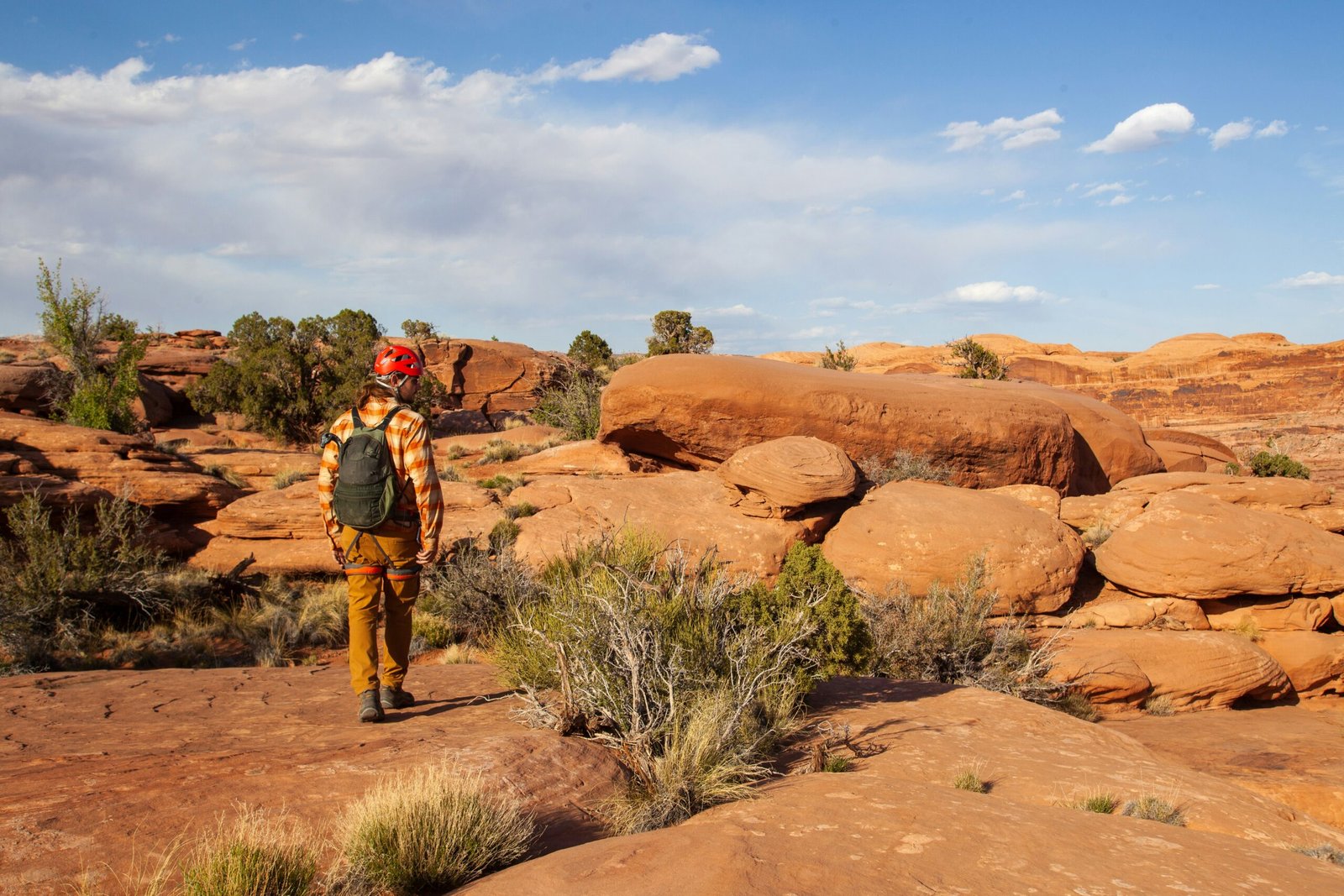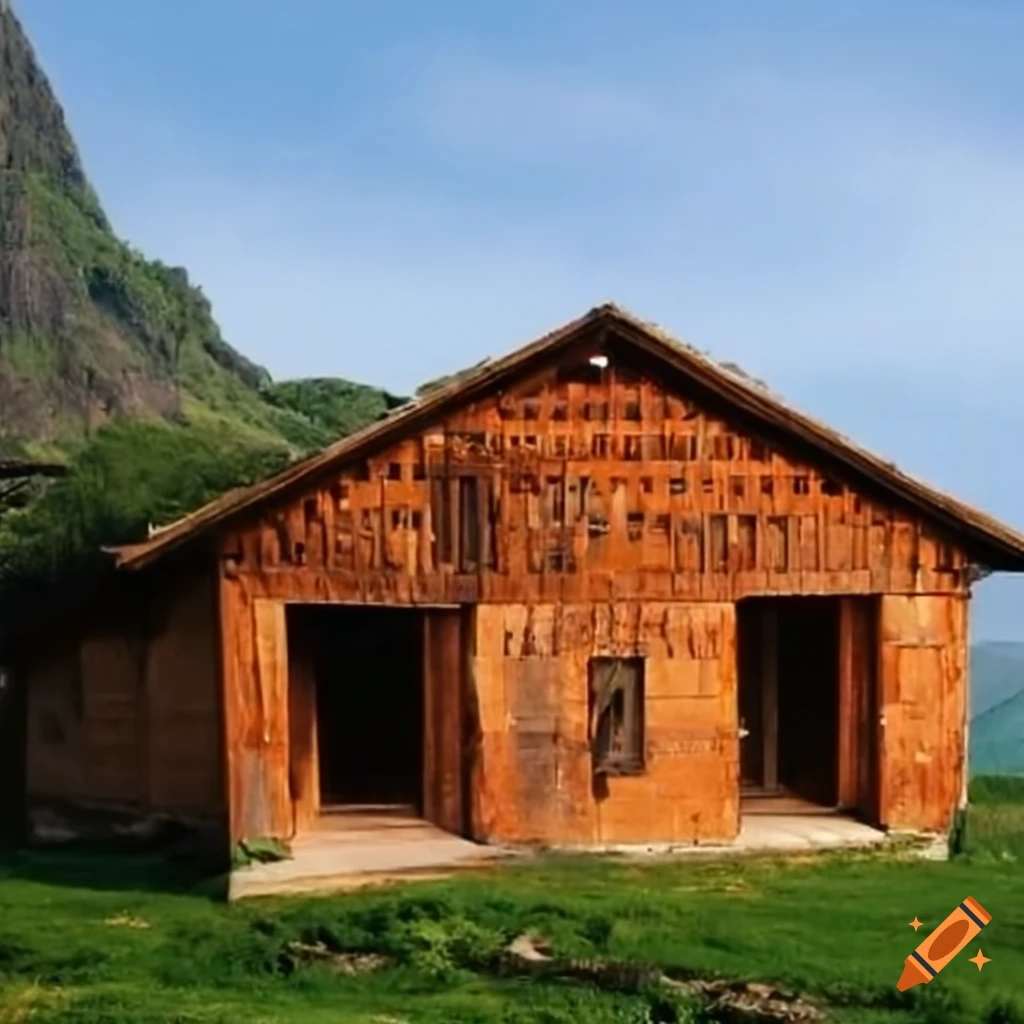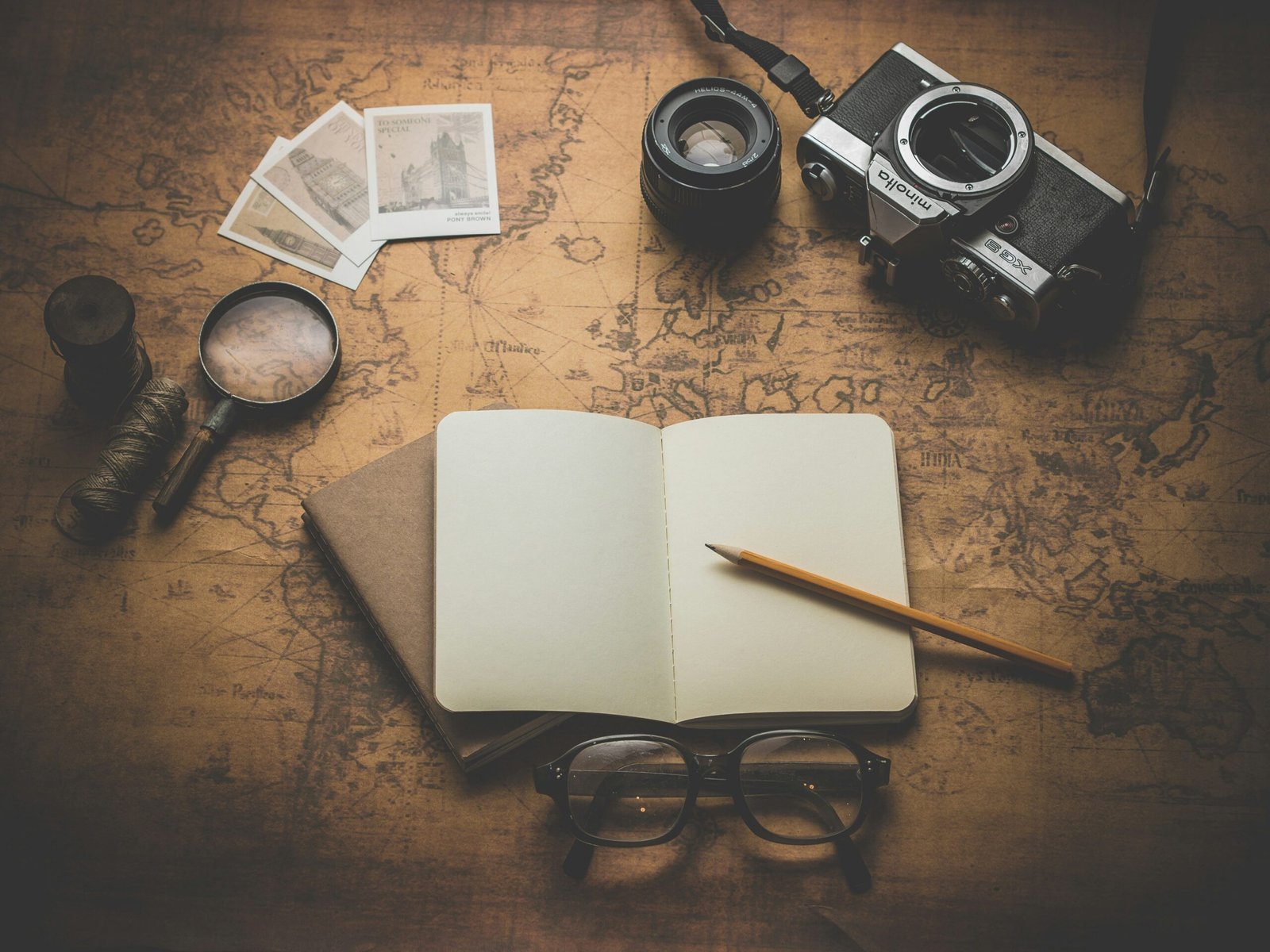Introduction to Desert Solo Adventures
Embarking on a solo adventure in the desert is an experience that captivates the imagination of many outdoor enthusiasts. The allure of such a journey lies in the profound solitude, the breathtaking landscapes, and the personal challenge it presents. The desert, with its vast and often harsh terrain, offers a unique setting where one can find both tranquility and a test of resilience.
Solo desert adventures provide a rare opportunity to disconnect from the hustle and bustle of modern life and immerse oneself in nature. The silence of the desert can be both overwhelming and meditative, allowing for a deep sense of introspection and self-discovery. The stark beauty of the desert landscapes, from sweeping sand dunes to rugged canyons, offers a visual feast that is unlike any other environment.
However, the allure of solitude and stunning vistas comes with significant responsibilities. Proper preparation is essential for anyone considering a solo adventure in the desert. This includes understanding the specific challenges posed by the desert environment, such as extreme temperatures, limited water sources, and the potential for sudden weather changes. Being well-prepared with the right equipment, adequate supplies, and knowledge of survival techniques can mean the difference between a successful adventure and a dangerous ordeal.
Moreover, the risks associated with solo desert travel cannot be understated. Navigating through unmarked terrain, the potential for dehydration, and the threat of wildlife encounters are just a few of the hazards adventurers might face. It is crucial to have a thorough plan and communicate it to someone reliable who is not on the trip. Knowing your limits and having the ability to make sound decisions under pressure are vital components of a safe and enjoyable desert adventure.
In essence, solo desert adventures offer a unique blend of solitude, natural beauty, and personal growth. With careful preparation and a respect for the environment’s inherent dangers, adventurers can experience the desert’s mystique while ensuring their safety.
Choosing the Right Desert for Your Adventure
Embarking on a solo adventure in the desert is a captivating endeavor, but selecting the appropriate desert is paramount to the success and enjoyment of your journey. Different deserts around the globe offer unique experiences, making it crucial to align your choice with your skill level, interests, and safety considerations.
The Sahara Desert, stretching across North Africa, is one of the most iconic deserts, known for its vast sand dunes and stunning landscapes. However, the extreme temperatures and expansive size require advanced preparation and experience. On the other hand, the Mojave Desert in the southwestern United States provides a more accessible option, with a variety of terrains ranging from sand dunes to rocky outcrops, and is relatively easier to navigate for beginners.
For those seeking a unique and challenging environment, the Atacama Desert in Chile offers a surreal landscape with salt flats, lunar-like valleys, and geysers. Its high altitude and arid conditions make it a thrilling yet demanding destination. Similarly, the Australian Outback presents an adventure filled with rich Aboriginal history and diverse wildlife, but its remoteness necessitates thorough planning and caution.
When choosing a desert, consider the climate and terrain that suit your comfort and skill level. Deserts like the Namib in Namibia are known for their milder climate, while others, such as the Arabian Desert, can have extreme heat during the day and freezing temperatures at night. Accessibility is another critical factor; some deserts are easily accessible by road, while others might require off-road driving or even guided tours.
Safety cannot be overstated. Research the potential hazards of each desert, such as wildlife, weather patterns, and the availability of water sources. Equip yourself with adequate supplies, including maps, navigation tools, and emergency contacts. Engaging with local guides or joining desert trekking groups can also enhance safety and enrich your experience.
In summary, choosing the right desert for your solo adventure involves a careful evaluation of your capabilities and preferences. Thorough research and preparation will ensure that your desert expedition is both thrilling and safe, allowing you to fully immerse yourself in the awe-inspiring beauty of these unique landscapes.
Essential Gear and Supplies
Embarking on a solo adventure in the desert demands meticulous preparation and the right equipment to ensure safety and success. The harsh and unpredictable desert environment necessitates specific gear and supplies tailored to withstand extreme conditions. Here, we outline the essential items you need for a solo desert expedition.
Clothing and Footwear: Proper attire is critical. Opt for lightweight, breathable clothing to protect against the sun’s intense heat while allowing sweat to evaporate. Long-sleeved shirts and pants made of moisture-wicking materials are recommended. A wide-brimmed hat and sunglasses will shield your face and eyes from UV rays. Footwear should be sturdy, comfortable, and designed for rugged terrain; consider high-quality hiking boots with good ankle support.
Navigation Tools: A reliable GPS device and a detailed map of the area are indispensable for navigation. Additionally, carry a compass as a backup in case electronic devices fail. Familiarize yourself with the terrain and landmarks before setting off to enhance your navigational skills.
Shelter: Portable shelter is essential, even if you’re planning a day trip. A lightweight tent or bivouac sack will provide refuge from the elements. Ensure your shelter is capable of protecting you from high winds and sudden temperature drops common in desert environments.
Emergency Equipment: A well-stocked first aid kit is non-negotiable. Include items such as bandages, antiseptics, tweezers, and any personal medications. A multi-tool, emergency whistle, and signaling mirror are also crucial for handling unexpected situations. Additionally, a satellite phone or personal locator beacon (PLB) can be lifesaving in emergencies where mobile phone service is unavailable.
Water and Food: Hydration is paramount in the desert. Calculate the amount of water needed by estimating at least one gallon per person per day, adjusting for strenuous activity and high temperatures. Carry additional water in case of emergencies. Non-perishable, high-energy foods such as nuts, dried fruits, and energy bars will sustain you during the trip. Plan meals according to the duration of your adventure, ensuring a balanced intake of proteins, carbohydrates, and fats.
Equipping yourself with the appropriate gear and supplies is fundamental for a safe solo desert adventure. Proper preparation can make the difference between a successful journey and a hazardous ordeal.
Physical and Mental Preparation
Embarking on a solo adventure in the desert demands significant physical and mental preparation. The harsh and unpredictable environment calls for a training regimen designed to build endurance and strength. Begin with cardiovascular exercises such as running, cycling, and swimming to enhance overall stamina. Incorporate strength training to build muscle resilience, focusing on core, leg, and upper body exercises. This combination of cardio and strength training will prepare your body to handle the physical challenges of desert terrain.
Acclimatizing to desert conditions is equally crucial. If possible, spend time in similar environments to get accustomed to the heat, dry air, and intense sun exposure. Gradual exposure will help your body adapt, reducing the risk of heat-related illnesses during your adventure. Additionally, practice hydration techniques and monitor your fluid intake carefully to maintain optimal hydration levels.
Mental preparation is just as important as physical readiness. Solo desert adventures can be mentally taxing, requiring resilience and the ability to remain calm under pressure. Engage in mindfulness practices such as meditation or yoga to enhance your mental fortitude. These practices can help you stay centered and reduce anxiety in stressful situations.
Developing problem-solving skills is vital for tackling unexpected challenges. Simulate potential scenarios you might encounter in the desert and plan your responses. This proactive approach helps build confidence and ensures you are prepared for various situations. Additionally, learning basic survival skills, such as navigation, first aid, and emergency signaling, can be invaluable.
The importance of mental resilience cannot be overstated. Cultivate a positive mindset by setting realistic goals and celebrating small achievements throughout your training. Visualization techniques can also be beneficial; imagine yourself successfully navigating the desert, overcoming obstacles, and reaching your destination. This mental rehearsal can boost your confidence and increase your likelihood of success.
Safety Precautions and Risk Management
Embarking on a solo adventure in the desert necessitates a thorough understanding of safety precautions and risk management strategies. One of the primary concerns in such an environment is the risk of dehydration and heatstroke. Recognizing the early signs of these conditions is crucial. Symptoms of dehydration include excessive thirst, dry mouth, and decreased urine output, while heatstroke may manifest through a throbbing headache, lack of sweating despite the heat, and a rapid pulse. To mitigate these risks, it is essential to stay adequately hydrated by consuming water regularly and avoiding overly strenuous activities during the peak heat of the day.
Informing someone about your itinerary is another critical safety measure. Before setting out, ensure that a trusted individual is aware of your planned route, estimated time of return, and contact information. This step can significantly enhance your safety, as it ensures that someone will raise the alarm if you fail to return as expected. This precaution is particularly important in the desert, where navigating unfamiliar terrain alone can increase the risk of getting lost or encountering unforeseen challenges.
Wildlife encounters can also pose significant risks during a desert adventure. Familiarize yourself with the types of animals that inhabit the area, and learn how to respond appropriately to minimize danger. For example, if you encounter a rattlesnake, it is advisable to slowly back away and avoid sudden movements. Carrying a first aid kit equipped with supplies for treating bites and stings is also recommended.
In the event of an emergency, having reliable communication tools is vital. A satellite phone or emergency beacon can be lifesaving, especially in remote desert areas where cell phone coverage may be nonexistent. These devices enable you to contact emergency services or signal for help if you find yourself in a dire situation. Ensure that you know how to operate these devices before your journey and check their battery life regularly.
By diligently preparing and adhering to these safety precautions and risk management strategies, you can significantly reduce the risks associated with solo desert adventures, ensuring a safer and more enjoyable experience.
Navigating the Desert Terrain
Successfully navigating the desert terrain requires a blend of modern technology and traditional methods. Utilizing maps and GPS devices is fundamental for precise orientation. Ensure your GPS device is fully charged and, if possible, carry a portable charger. Maps, although sometimes overlooked, provide a reliable backup. Keep a detailed topographic map of the area you’re exploring, and familiarize yourself with the symbols and scale.
In addition to technological tools, traditional navigation methods remain invaluable. The position of the sun can help determine direction during the day. At night, constellations serve as reliable guides; the North Star, for example, can help maintain your course. These methods are crucial if technology fails.
Staying on established trails is recommended whenever possible. Trails are designed to avoid hazards and offer a safer route through the desert. When venturing off-trail, be vigilant of potential dangers. Unstable sand dunes can shift unexpectedly, making navigation difficult and dangerous. Keep an eye out for weather changes; sudden storms can dramatically alter the landscape and visibility. Flash floods are another significant risk, especially in low-lying areas and canyons. Always check weather forecasts before setting out and avoid narrow canyons if there’s any chance of rain.
Identifying and avoiding hazards is a skill that can be developed with practice and awareness. Look for signs of instability in sand dunes, such as ripples and loose sand. Learn to recognize cloud formations that could indicate imminent weather changes. Understanding the lay of the land and the signs of potential dangers can significantly enhance your safety during a solo desert adventure.
Respecting the Desert Environment
Exploring the desert on a solo adventure offers a unique opportunity to connect with nature’s raw beauty. However, it is crucial to approach this environment with a deep sense of respect and responsibility. The desert is a fragile ecosystem, and its preservation depends on the actions of those who venture into its vast expanses.
One of the fundamental principles to adhere to is Leave No Trace. This set of guidelines ensures that the impact of human activity on natural environments is minimized. Proper waste disposal is a key aspect of this. Always pack out what you pack in. This includes not only visible trash but also less obvious waste such as food scraps and biodegradable items. Leaving any waste behind can disrupt the natural balance and harm local wildlife.
Another critical element is minimizing campfire impact. While campfires can be a comforting presence in the desert night, they can also cause lasting damage. Use a camp stove for cooking instead and avoid building new fire rings. If a fire is necessary, use existing fire rings and ensure the fire is completely extinguished before you leave. This helps prevent wildfires and preserves the natural landscape.
Respecting wildlife is also paramount. The desert is home to a variety of species, many of which are specially adapted to survive in such harsh conditions. Observe animals from a distance and never attempt to feed or interact with them. Human interference can disrupt their natural behaviors and put both the animals and adventurers at risk.
Finally, take a moment to appreciate the desert’s beauty and fragility. By understanding and respecting the delicate balance of this ecosystem, you contribute to its preservation for future adventurers. Every step taken to protect the desert ensures that its splendor remains unspoiled for generations to come.
Conclusion and Final Tips
Embarking on a solo adventure in the desert is an exhilarating and rewarding experience that requires diligent preparation and a keen sense of awareness. As discussed in this blog post, the key points to focus on include thorough preparation, prioritizing safety, and showing deep respect for the environment. Ensuring that you are well-prepared with the right gear, adequate water supply, and a comprehensive understanding of your chosen desert terrain cannot be overstated.
Safety should always be at the forefront of your mind. This means having a reliable communication device, informing someone of your itinerary, and understanding the signs of heat-related illnesses. It’s crucial to stay informed about the weather conditions and to be flexible with your plans if the situation demands it. Being aware of your physical and mental limits is equally important; pushing beyond these limits can lead to dangerous situations.
Respecting the desert environment is not only about preserving its natural beauty but also about ensuring your safety. This includes adhering to established trails, minimizing waste, and being mindful of the delicate ecosystem. The desert is a unique landscape that requires a thoughtful approach to exploration, ensuring that it remains pristine for future adventurers.
As a final tip, embrace the journey with an open mind and a sense of wonder. Solo desert adventures can be transformative experiences that offer profound insights and personal growth. Stay flexible, adapt to the unexpected, and savor the solitude and beauty of the desert. We encourage you to share your experiences and the lessons you’ve learned from your own desert adventures. Your stories can inspire and guide others who are considering embarking on their own solo journeys into the desert.



